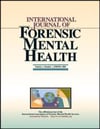
The results of the current study suggest that the quality of risk formulation needs improvement but that HCR-20-V3 formulations of risk are better than those of the HCR-20 Version 2. This is the bottom line of a recently published article in the International Journal of Forensic Mental Health. Below is a summary of the research and findings as well as a translation of this research into practice.

Featured Article | International Journal of Forensic Mental Health | 2018, Vol. 17, No. 2, 195-201
An Evaluation of the Quality of HCR-20 Risk Formulations: A Comparison between HCR-20 Version 2 and HCR-20 Version 3
Authors
Jenny Hopton, Partnerships in Care, United Kingdom
Adrian Cree, Partnerships in Care, United Kingdom
Sean Thompson, Partnerships in Care, United Kingdom
Russell Jones, Partnerships in Care, United Kingdom
Roland Jones, Partnerships in Care, United Kingdom
Abstract
In recent years more attention has been given to the crucial role of formulation when assessing and managing risk. There is evidence to suggest that not all clinicians are competent at producing formulations, despite this being a key competency. We investigated the quality of risk formulation in routine clinical practice in 121 forensic psychiatric hospital patients in the UK using the Case Formulation Quality Checklist Revised (CFQC-R). Next, we compared the quality of formulations in Version 2 and Version 3 of the HCR-20. The results overall showed that the quality was in the intermediate range, however, Version 3 formulations were of slightly better quality than Version 2. When formulations were considered in terms of word count, the findings suggested that longer formulations were not necessarily associated with higher quality. It appears that formulation quality has improved with the new version of the HCR-20, but there is a need for training in risk formulation for clinicians to improve the quality of those being produced.
Keywords
Formulation quality, risk formulation, HCR-20
Summary of the Research
Introduction
“Risk formulation has become central to the process of risk assessment in recent years. Approaches to risk assessment have evolved from unstructured risk assessment and actuarial risk assessment to structured professional judgement (SPJ), which incorporates formulation and treatment planning, to the current focus on the formulation . . . Formulation is defined as an organization framework for producing a narrative that explains the underlying mechanism and proposed hypotheses regarding action to facilitate change. Information gathered (most commonly using structured professional judgement tools) is synthesized so as to produce a narrative understanding or hypothesis of how and why factors contribute to the risk” (p. 195).
“There are two categories of risk formulation: theoretically informed and pragmatically grounded. Theoretically informed formulations draw from an accepted theoretical model to inform the understanding of risk. In contrast, pragmatically grounded formulation are derived using a validated structure or checklists to facilitate information integration, such as Weerasekera’s (1996) “Four P’s” model which considers predisposing, precipitating, perpetuating, and protective factors, and also the HCR-20 . . . However, the core elements of formulation are the same regardless of the model used, and as no individual theory or model to date has been able to adequately explain violence, pragmatically grounded formulations have been suggested to be better suited to the risk assessment of violence” (p. 195).
“The third edition of the HCR-20 placed a greater emphasis on formulation than previous versions. Despite growing recognition of the importance of formulation in risk assessment and risk management, there has been little research on it. While there has been much research on the HCR-20 and its reliability and validity, there has been very little study of the quality and completeness of formulations in routine clinical practice. Indeed, although formulations are considered central to risk assessment, there is no empirical evidence as to what an adequate formulation should comprise . . . There is also no evidence as to the appropriate length of a formulation, or whether length of formulation is related to quality” (p. 196).
“Sturmey and McMurran (2011) stress the importance of accurate case formulation in forensic settings and highlight that errors in formulation could lead to reoffending, harm to others and also large costs of detention and treatment. Ensuring accuracy of formulations can be a complex task due to them being frequently revised and adapted. Different clinicians depending on their training and preferred theoretical models could also draw varying conclusions regarding an individual. In order to begin to assess the quality of a formulation, Hart et al. (2011) suggested that perhaps the first step is to agree on criteria for judging adequacy in formulations. They suggested ten criteria that should be apparent
within a good formulation. These criteria formed the basis for the Case Formulation Quality Checklist Revised (CFQC-R)” (p. 196).
Current Study
“The purpose of our study was to systematically evaluate the quality of risk formulations in a large clinical service in the UK using the CFQC-R. Given the increased emphasis on formulation in the HCR-20 Version 3 compared with HCR-20 Version 2 we also aimed to compare the quality of risk formulations, derived using the HCR-20 V2 and the HCR-20 V3. Finally, we aimed to evaluate the length of risk formulations and to investigate whether there was a relationship between word count and quality” (p. 196).
“HCR-20 risk formulations were randomly selected from those carried out on inpatients in 20 independent secure psychiatric hospitals in the UK from 2013–2015. The final sample included 121 cases derived from 17 of the 20 hospital sites . . . There were 58 cases from which a HCR-20 V2 was extracted, and 63 cases from which a HCR-20 V3 was extracted. The cases were then divided approximately equally between three assessors to assess the quality of the formulation using the CFQC-R” (p. 197).
Results
“The median overall score on the CFQC-R was 6. Comparing V2 and V3 formulations, V3 formulations were rated significantly higher than the V2 cases on 6 of the CFQC-R criteria, namely narrative, external coherence, factual foundation, internal coherence, events understood over time, completeness, and the overall rating of quality. We found no item of the CFQC-R that scored significantly higher in V2 cases than V3 cases. Generally, we found that formulations were scored highest on the criteria of internal coherence and completeness. The items that were scored lowest were external coherence and action orientated” (p. 198).
“The mean length of the risk formulations was 519.6 words and there was a large variation between them. There was no significant difference in mean word count between V2 and V3. With regard to the relationship between length of formulation and quality, the scatter graph showed a nonlinear relationship. The optimal length appeared to be those that were approximately 400–800 words in length. Longer formulations were not rated as being of higher quality” (p. 198).
Translating Research into Practice
“We found that in general, the formulations were of poor to intermediate quality, scoring 6 or less out of 10 on the CFQC-R. These findings are similar to those that have investigated the quality of diagnostic case formulations in general mental health settings. Notwithstanding the moderate overall quality of formulations, we found significantly higher quality in the V3 compared with the V2 on 6 out of the 10 quality criteria” (p. 198).
“It is possible that there was a measurable improvement in the quality of formulations in V3 cases compared with V2 in our study due to the emphasis placed on formulation in the V3 as compared with the V2. The structure of the V3 may have helped clinicians consider and organize the importance of risk factors, and how they relate over time. For example, the addition of the age subheadings for history of violence and antisocial behavior items, the requirement to consider whether risk factors are both present and relevant, and the addition of a scenario planning section. It is also possible that the training delivered on the V3 prior to its implementation in all the hospitals increased the quality of formulations by the clinicians. Although similar training on the V2 was given to staff prior to its implementation, the recency of the training, as well as added emphasis on formulation in the V3 manual may have had a positive effect” (p. 199).
“Overall, the ability to go beyond description of facts to make testable predictions in the formulations was poor in our sample, and the least difference was found between V2 and V3 on this criteria. Clinicians may have hypotheses regarding why a patient behaves the way they do, but may not feel confident to detail these in documents mainly consisting of factual information. This task also requires significant reflection and is time consuming, and there are likely to be competing demands on clinicians in busy services. Work needs to be done to address this short-fall in risk formulations as going beyond descriptions of behavior to understanding risk is essential to make accurate decisions regarding treatment options and risk management” (p. 199).
“Formulations that prioritized and planned treatments were low in frequency in our sample, especially within the V3 category where this was the lowest scored item. The push for risk formulation use within forensic practice was to help bridge the gap between assessment and management, however, we found this did not happen explicitly. One potential reason for this was that the HCR-20 V3 includes a section on scenario planning in which treatment plans may be recorded. A limitation of this study was that only the risk formulation section was analyzed and not the scenario planning section. This may suggest that, in practice, formulation and scenario planning are being completed as one task, despite the HCR-20 V3 authors explicitly stating that formulation and scenario planning are separate stages of the administration process” (p. 199).
“When we explored how length of formulations was related to quality, we found that increased length did not improve quality of formulations as measured by the CFQC-R. Similarly, the shorter formulations in our sample had the lowest quality scores. The results showed that the highest quality formulations were approximately 400–800 words, with quality not improving for word counts beyond this mark. We would expect that these formulations scored well as they were clear, concise and free from unnecessary or irrelevant details” (p. 199).
Other Interesting Tidbits for Researchers and Clinicians
“Our findings suggest not only that formulation quality needs improvement but the specific areas to address in order to achieve this. We have found that particular attention needs to be paid to making sure formulations are consistent with theory (external coherence criteria), make detailed and testable predictions (predictive criteria), and prioritize and plan treatments (action orientated criteria)” (p. 200).
“It has previously been highlighted that the process of researching the validity and reliability of formulations is an area that has been long overlooked and requires investigation. There have also been suggestions about how to start with this enormous task, one of which was to first define a good quality formulation and measure it. In this study, using validated criteria, we have found that more work is needed to train clinicians to enable them to produce higher quality risk formulations. Future research is also needed to investigate whether there is a relationship between quality of formulation and efficacy of clinical risk management” (p. 200).
Join the Discussion
As always, please join the discussion below if you have thoughts or comments to add!







